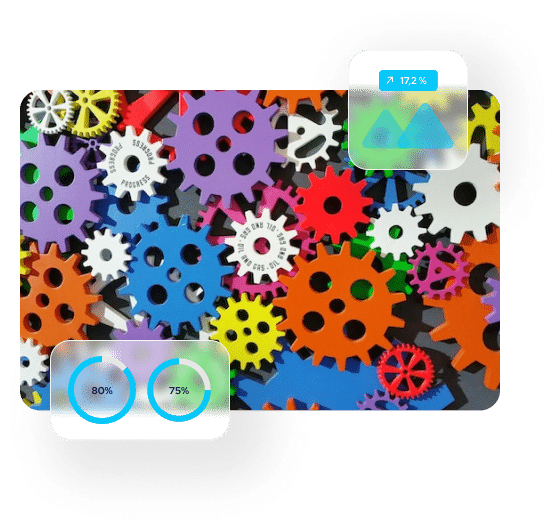Helping With Business Process Re-engineering
Through the structured approach of identifying the non-standard processes and aligning them through the system and process changes

Problems Companies Face
When They Need Help With Business Process Re-engineering?
Outgrowing an accounting system not designed to support integrated processes? Have substantial data siloes with your processes that cause data integration issues? ElevatIQ’s business process reengineering services are designed to help companies when they struggle with these challenges.
Outgrowing an Accounting System
Let’s face it. Accounting systems not designed for process integration cause process over-bloatedness. And the process needs to be ERPized first before implementing an ERP. Companies seek help from ElevatIQ when they might be outgrowing an accounting system.
Micro-industry Processes Too Different from Mainstream ERP Systems
Some industries have far trickier architectural needs than industries that are ERP-friendly. These companies also have substantial needs for process re-engineering before they are ready for digital transformation. Companies seek help from ElevatIQ when their micro-industry processes might be too different from mainstream ERP systems.
Current Process with Several Data Siloes
Not able to follow the instructions of technical vendors on how to restructure your data that will provide the needed operational efficiency? Not sure if you should restructure your processes or implement them as is? Companies seek help from ElevatIQ when they need help in restructuring master data and processes.
Recent M&A has Caused Process Bloatedness.
Acquired newer business models and business processes? The M&A has resulted in several heterogeneous business models under one company. Companies seek help from ElevatIQ when their recent M&A activity may have caused process bottlenecks and need to be streamlined prior to their journey of digital transformation.
Outgrowing Non-standard, Legacy, and Proprietary ERP Systems
Outgrowing non-standard, legacy, and propriety ERP systems with substantial data issues that need to be restructured prior to ERP implementation. Companies seek help from ElevatIQ when they are coming out of non-standard, legacy, and propriety ERP systems.
Want to learn more about why independent consultants have a higher success rate with business process reengineering?
Our Case Studies for
Business Process Re-engineering

ECommerce Supply Chain Transformation With ERP Selection
Download the eCommerce Supply Chain transformation case study and learn how LockNLube transformed its inventory and supply chain challenges by consolidating over 20 systems. As well as by creating business, process, information, and system architecture as they prepare for the next phase of their growth.

Omnichannel eCommerce Customer Experience Transformation
Download the omnichannel eCommerce customer experience case study and learn how fashion retailer AKIRA built a digital roadmap and managed stakeholder expectations to transform its processes and systems to explore newer business models such as buy-online-pickup-in-store and curbside pickup.

ERP Optimization and Integration Architecture Development
Download the ERP optimization and integration architecture development case study and learn how Work Sharp fixed their broken ERP implementation that caused customer service issues and improved Supply Chain planning.
Our Methodology
for Business Process Re-engineering
Our methodology starts with the assessment of your current business processes. This step is typically followed by a deep discovery and analysis phase to probe into the candidates’ right fit for business process re-engineering, followed by change management, an implementation, and an optimization plan.

1 Assessment
Through primary and secondary research, this assessment digs into each of your datasets, transactions, and processes to identify the right candidates for business process re-engineering and the stakeholder's analysis of the personas and departments impacted by the change.
3Solution Analysis
This step digs into the potential solutions, whether they might be process-related or system, and evaluate their pros and cons. This step also performs the financial and technical feasibility of each solution, as well as identifying a solution that is most financially realistic and agreed upon by all parties.
5Adoption and Optimization
Post implementation, this step measures the desired KPIs and process compliance and adoption in the post-implementation phase. Any deviations? The appropriate steps are taken until the processes are able to hit the KPIs desired.
2Business Process Analysis
This is a deep dive into the as-is and to-be process models, along with the workshops with each stakeholder who might be impacted because of the change. Once all the stakeholders are aligned on the to-be state of the processes, the solution phase begins.
4Implementation
Depending upon the complexity of the change, whether the change is simply a process or data change. Or a full-blown digital transformation initiative, the length of this phase could vary.
Ready to learn how we can help With Business Process Re-engineering?
Our Other
Business and Technology Advisory Services
ElevatIQ business and technology advisory services include business process re-engineering, business process improvement, business process documentation, change, and project management, post-merger integration, and audit support.
Business Process Improvement
This service helps in hitting a specific KPI, such as the amount of waste, inventory turns, or demand forecast accuracy. Through the root cause analysis of current data and processes, an as-is and to-be plan is built. Using an MVP approach, an initial pilot is created to understand the impact of the change, followed by continuous monitoring and improvement.
Business Process Documentation
This process helps reverse engineering the processes deeply buried in business systems. This exercise is helpful for companies that are building operational capacity plans for the next phase of their growth. The process is then followed by the to-be process models, comparing the changes and investment that would be required to grow to the next inflection point.
Change and Project Management
This service helps in managing any transformation initiative, whether you are making process or system changes. The change process has three major steps preparing for change, managing change, and reinforcing change. Each of these steps has a deliverable, such as a business case, implementation roadmap, training plan, engagement model, and change governance plan.


